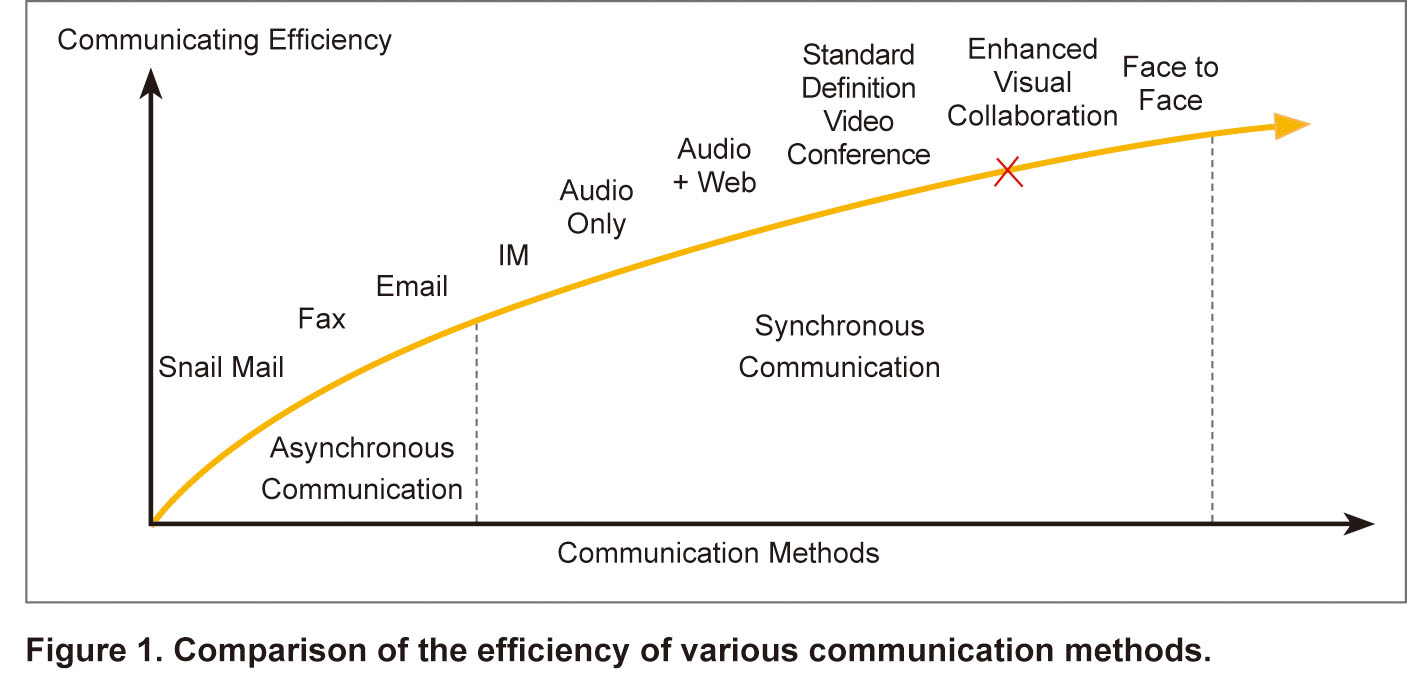Telepresence Leading a New Way in Communications
Telepresence (also called virtual presence) is a new concept in video communication. It is a multimedia technique which aims to create a sense of physical presence at a remote location using sound, vision, and touch. Given that there are numerous instant visual communication tools that have been widely accepted, and that applications such as network video conferencing, visual telephony, and high-end video conferencing have come into widespread use, how can telepresence stimulate a newfound interest in people for video communication? Those familiar with the history of video communications know that, after decades of development and improvement, video communications have well-established protocols, audio/video standards, and technologies. Future development is likely to be centered on the improvement of existing technologies.
The Upsurge of Telepresence
Some of the key elements in existing telepresence systems appeared a long time ago. At the end of last century, the concept of telepresence was proposed but received little serious attention. However, in recent years, video technology has made rapid progress—especially since the H.264 protocol was developed.
H.264 is a new-generation digital video compression format developed by the ISO and ITU (after MPEG4). It retains the advantages of conventional compression technologies but also features lower code rate, higher quality, stronger error correction capability, and better network adaptability.
At present, a system with H.264 can transfer 1080p HD video at a speed of 2Mbps; thus, people can clearly see the facial expressions of the other party. It is an important technique through which telepresence can create a life-like communication experience.
Telepresence Initiating a Conceptual Revolution in Communications
In the development of video communication technologies over the past several decades, R&D has been focused on problems such as bandwidth insufficiency, audio/video quality, and time delay. Throughout the history of communications technology, the goal has been to continuously enhance efficiency.
Wainhouse Research, a firm specializing in multimedia communications, compared real-life face-to-face communication with various methods of communication throughout human history. Methods including postal mail, fax, email, IM, voicemail, video conferencing, and telepresence (also defined by Wainhouse as enhanced visual collaboration), were studied in order to delineate the development trends of video technology (see Figure 1).

Compared with speech and language, eyes, gestures, facial expressions, actions, and other body language make up 65% of the total daily communications of an ordinary person. The reason telepresence is attractive is because it can provide life-sized visual images, eyes contact, ultimate audio/video clarity, and clear facial expressions—all of which greatly improves the communicative effectiveness and points to a new direction in technological development.
Commercialization of Telepresence
Attention needs to be paid to the following points when deploying telepresence:
■ Compatibility with the existing video conferencing network to make full use of the old system
Generally speaking, clients who are willing to deploy a telepresence system have already used a video conferencing system. The telepresence system transformed from the video conferencing system should be compatible with the existing video conferencing system so that the advantages of the old system can be retained.
■ Customized and integrated solution
Space and thoughtful design can ensure the effectiveness of telepresence systems. However, after meeting rooms have already been built, it is sometimes difficult for a new room to be built or renovations made to existing office space to accommodate a telepresence system. Telepresence, therefore, must be flexible and customizable. A telepresence system not only includes the core products of terminal equipment and servers, but also AV products such as multimedia audio/video matrix supporting SD and HD interfaces, audio processors, projectors, amplifiers, and a central controller. These often form an integral part of the spatial arrangement and decoration of meeting rooms. Coordinating telepresence elements in order to minimize cost, maximize the benefits, and ensure the expandability of the system, can present a major challenge.
■ Implementation engineering capabilities and continuous service
Since telepresence involves various fields of work, it is important for manufacturers to carry out turn-key projects, provide considerate on-site service, and respond to accidents.
As a new product, telepresence will influence market patterns. China’s manufacturers have particular advantages compared to their overseas counterparts in terms of customization, integration of products, and engineering services.
Based on over 10 years of experience in video communications, ZTE has a thorough understanding of telepresence products. With its ZXV10 TPS8000, ZXV10 TPS300, ZXV10 TPS100 series, ZTE leads China’s domestic manufacturers into a new era of video communications.